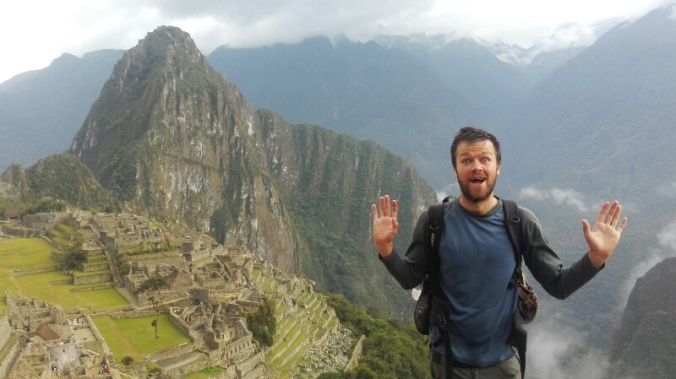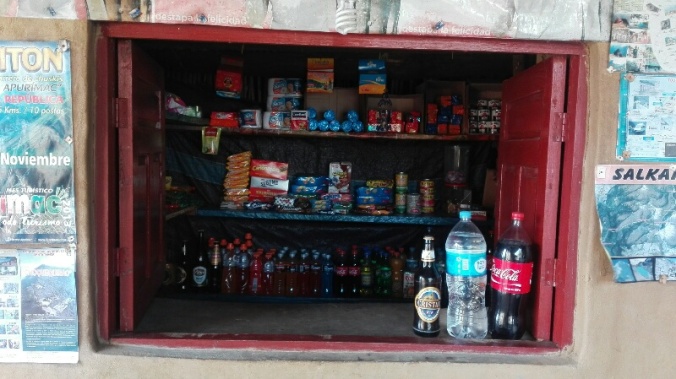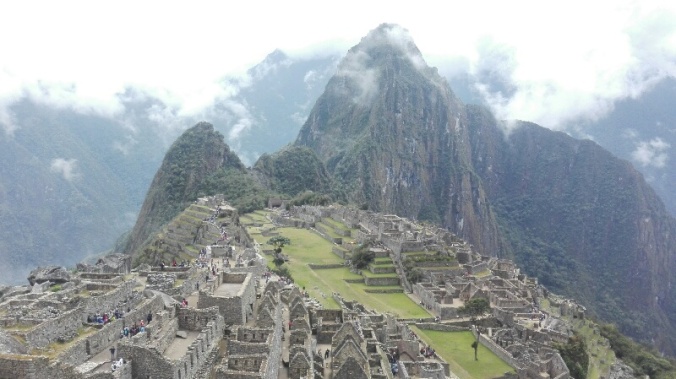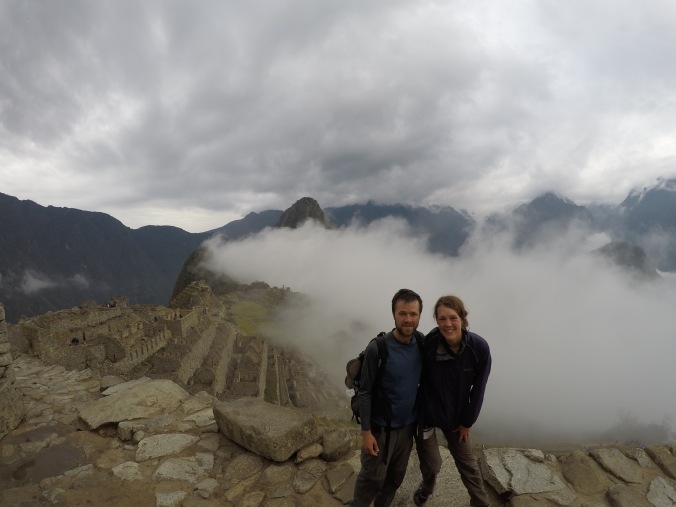I’m writing this from the 17th floor rooftop pool of a hotel in Lima, celebrating 6 months to the day since we pushed off from Ipanema Beach in Rio de Janiero. There’s a family from Yorkshire occupying the sun loungers next to us, and filling my ears with a gorgeous familiar drawl that makes me slightly homesick in a nice way. I have (my 3rd) gin and tonic in my hand, and the sun is setting over the Pacific in front of us. Life is good
The last month of crawling through the mountains and dodging snow storms now seems like a world away, but looking back at the elevation profile from my little GPS tracker brings screaming back every thigh busting high and bone shaking low of the last stage of our highland adventures. It also makes me think back to a year ago when I had to dismount and push my bike over the biggest hill that Southern England when attempting to cycle from Brighton over Ditchling Beacon (a mighty 248 metres)!
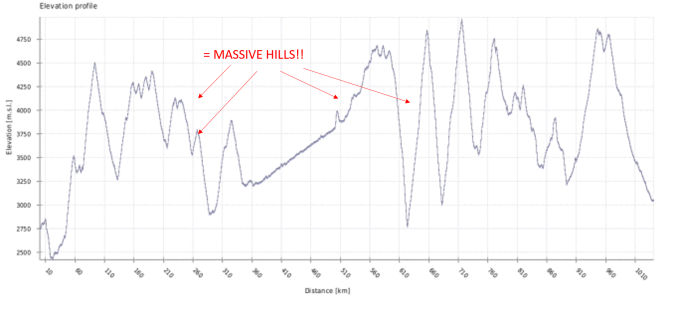
Very technical diagram which basically shows “we climbed lots of massive hills and it was really hard!”
With the exception of our jungle detour, we’ve been above 3000m now for well over 3 months, and it was all leading up to this part of our trip – the real Peruvian Andes. The Cordilleras. No more foothills, no more flat stretches, just one gravelly mountain pass after another that took us a thousand slow kilometersfrom from Ayacucho to Huaraz, where we spent another couple of weeks in our hiking boots . There were daily 1000m+ climbs, descents that sent me flying off my bike, beautiful wilderness and wild camping spots that made us feel like we were the only people for miles around. It was gorgeous, and it was fricking hard. So I think I will pour a 4th G&T whilst I remnisce….
We’d planned to follow the Andes by Bike – Great Divide route, but ended up doing lots of on the fly route changes, to dodge the army of orange Peruvian road builders who are tarmacing Peru’s dirt roads at a rate of knots. A endless gathering of workers lining the roadside never failed to “entertain” us as we slogged up hill, with their “gringooooooo!!!!” . All meant in good jest but SO much harder to respond to in good humour when you are crawling past people at 6kph. MUCH more fun when you are zooming downhill past them.
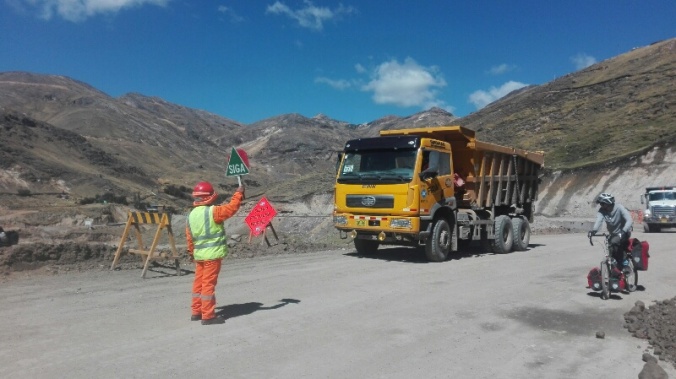
On your marks…get…set…..GO. Leaving Huancavelica and a few days of racing the tipper trucks trying to tarmac the road
Mostly, our routes choices turned out to be awesome, a mix of tarmac and lots of peaceful dirt roads lined with dozens of lakes, mountain views, unexpected hot springs to soak our road worn bodies, and friendly villages. We started to enjoy looking at the map and purposefully trying to find different ways to head north.
We headed hrough river valleys where the only locals left in deserted villages were donkeys grazing in the sun…
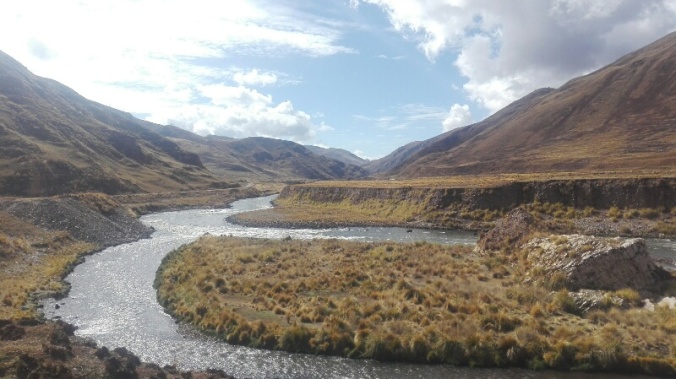
Leaving the tarmac after La Oroya and following the river

A lonely donkey and a deserted village
…around dozens of lakes of all kinds of colours…
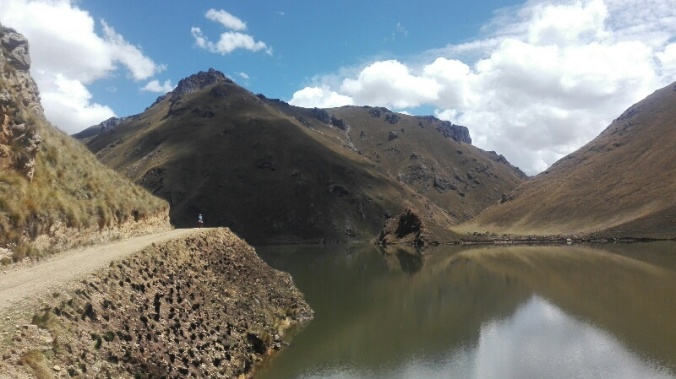
A last minute change of route from La Oroya proves to be a success as we spend the morning skirting around a huge lake
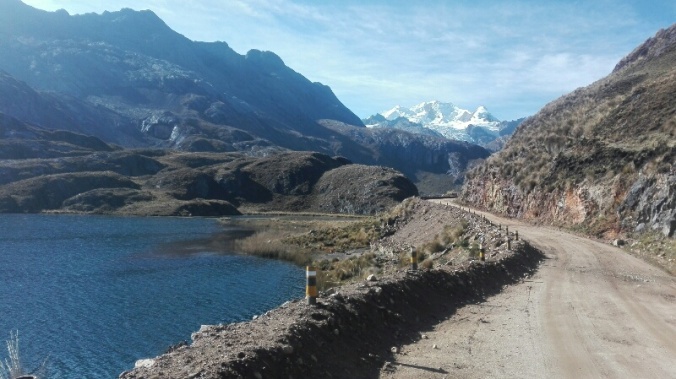
…and over dramatic mountain passes, each one revealing a completely differnt landcape on the otherside….
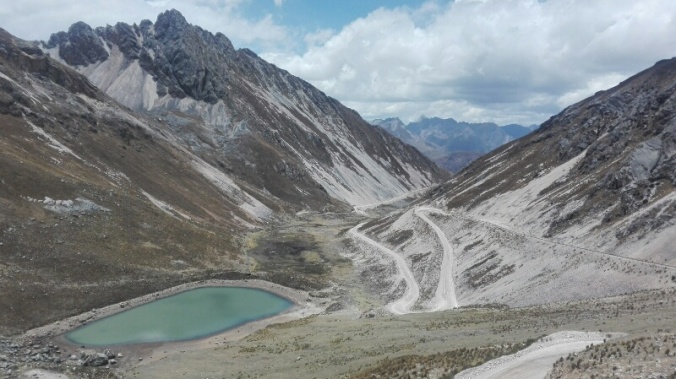
The reward for climbing up to 4700m, ready to zoom down to Picoy, and trying to beat the grey clouds on the horizon (we lost)
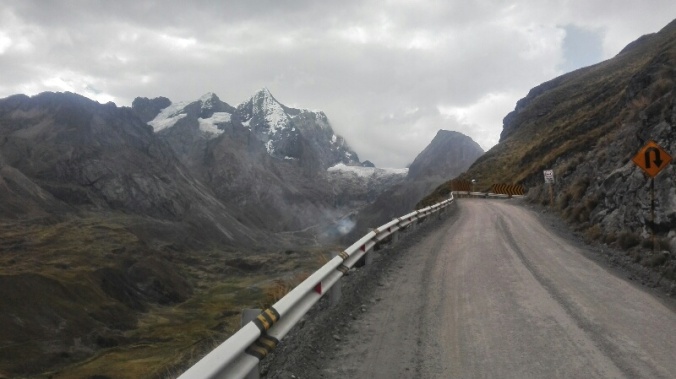
Our first view of the Cordillera Huayhuash climbing towards the Raura mine, including a huge glacier hanging between the mountains

Ummm….can’t remember where this was! But it looks pretty
We found some great wild camping spots, by glacial lakes, pink rivers and overlooked by snowy peaks….
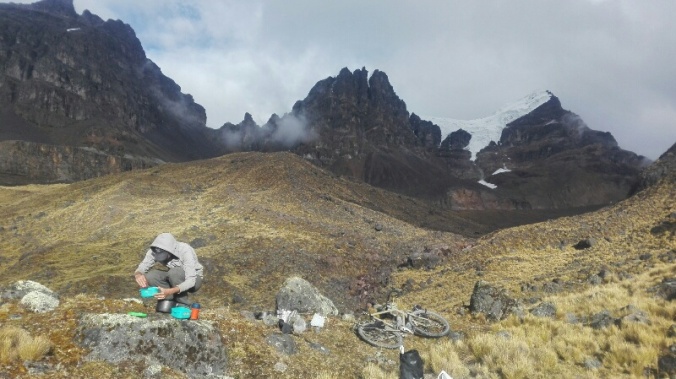
Camping at 4600m on the Pastouri Highway. After hiding under our tarpauline at the side of the road for a couple of hours the skys cleared to reveal a huge glacier behind us and a pink river running down from it
…including one where we unexpectadly woke up to this view, after pitching our tent in the near dark of a rainy, cloud covered dusk.

Camp spot after desending in the rain through a mining camp at Raura
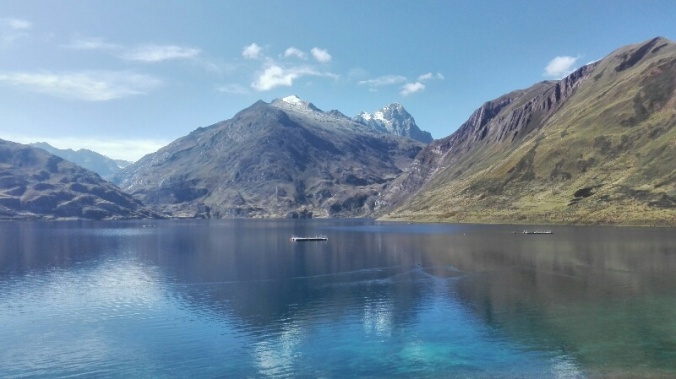
And another gorgeous lake that was waiting for us just around the corner
There were also some not-so great sleeping spots, including a patch of grass that turned out to be mostly made of cow poo, and some impressively awful towns and villages.
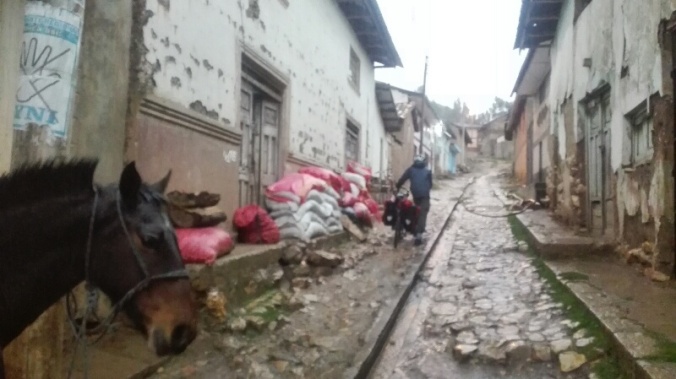
Another day, another beautiful highland village. This one was Acostambo, which seemed to consist of one muddy street, a handful of roadside shops, and a lone horse wandering freely around.
Highlights of awfullness included Rapaz, where our only sleeping option appeared to be a bed shared with the elderly (ancient) owner of the full hospedaje (for a fairly hefty fee!), in a room that smelt like it had been no stranger to death. Then there was Oyon, home to an unusually high number of unfriendly locals, and where we ended up in several heated arguements with shopkeepers, hotel owners, and random people on the street calling us gringos.
But mostly, and especially away from the more well trodden villages on the Andes by Bike route, “Giant” Tom and his facial hair continued to prove a hit with the locals…
…and we continued to scare the sh*t out of sheep all over the country
Our mornings were generally blue and brights, but rainy season loomed with some menacing grey clouds starting to gather by early afternoon. Mostly we were lucky, and the clouds passed us by or we managed to take shelter in random villages, or get our tent up before the late afternoon rain started.
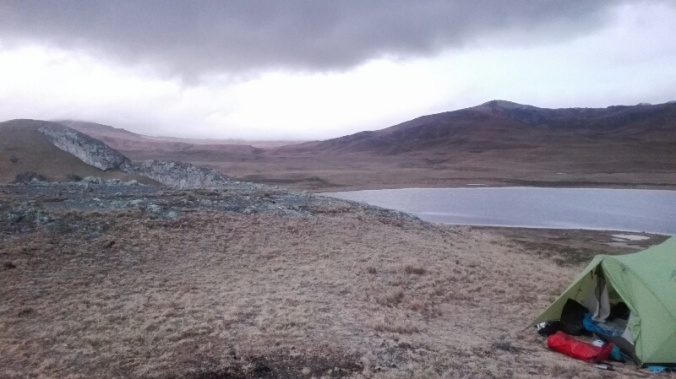
Good timing, tent up and brew on shortly before the downpour began
…but a few times we were caught out. Time to engage poncho, industrial rubber gloves, and commence the failproof tactic of “hide under taurpauin for 2 hours”.
At Abra Rapaz, we hit out highest point yet on the bikes, a breathless 4965m, and achingly close to 5000m mark…

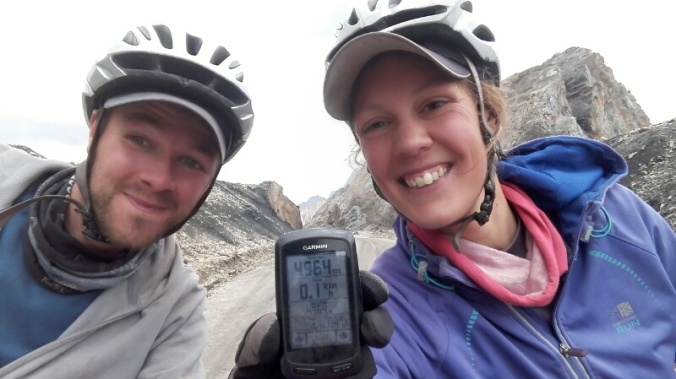
….and hit an unexpected low when we a we took a “short cut” only to accidently descend 2500m . Knowing we’d have to slog back up to get back to where we wanted to be (every 10 seconds of downhill fill, is at LEAST a minute of pain to get back up again!), sometimes, you just have to lie at the side of the road and pretend to be on a beach instead.
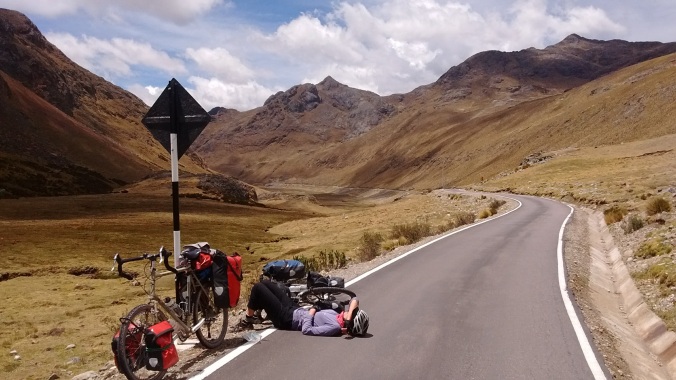
Legs say No
In the bigger towns and cities along the way, we continued to find time to work our way through our Peruvian, trying our first, then second (and safe to say, last) guinea pig, awesome Ceviche in Huancayo. But mostly we continued to eat a lot of pollo a la brasa (chicken and chips) and
Signs in Huancayo and Huancavaleca entertained the teenage boy’s sense of humour in us as the referenced the traditional “Huanka” culture, and one restaurant name that we have no excuse for!
We arrived in Huaraz, feeling like conquerers of the Andes! 1000 kilometers, 21,500 metres of climbing and 10 or so moumtain passes cracked through in 18 days.
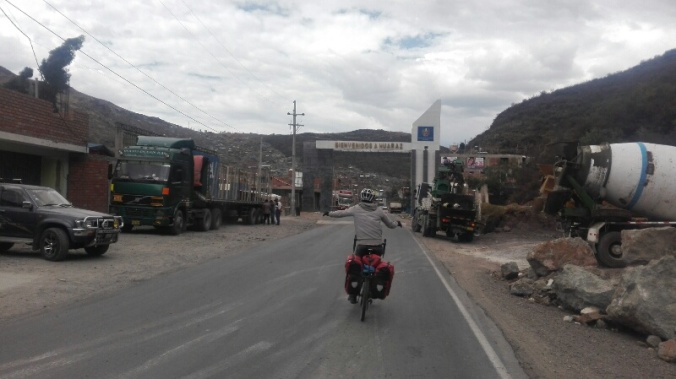
The “look mum no hands” celebration on arriving in Huaraz
But we’d really only just gotten started. A few days later we were off in to the mountains proper, donning the rucksacks again for an 8 day walk around the incredible wilderness of the Huayhuash circuit, then the 4 day Santa Cruz trek. A perfect end to our time in the highlands, where the weather rewarded our previous few weeks of graft with an unseasonal week of glorious weather and blue skies. After weeks of glimpses and far off views, we finally saw the the mountains in all their close up, sun drenched glory. Amazing.
A few photos from Santa Cruz…
and a few from Huayhuash…
Finally ready to say goodbye to the mountains and dirt roads for a while, from Huaraz it was a dusty few days down to the coast where we joined up with the big old Pan American highway, ploughing north through the desert. A complete change of scenery, but we’re looking forward to a few more gorgeous sunsets now as we head up towards Ecuador with the Pacific to our left. First though, a few days in Lima (via bus!) where we shall be mostly lying by a pool, drinking pisco sours, and blowing more cash than we’e probably spent in a month on a single dinner at the world’s “13th best restaurant” Maido. Bring it on!
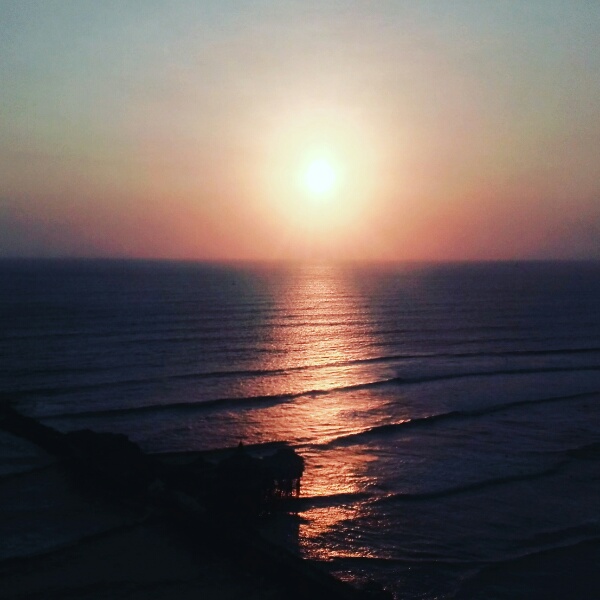






























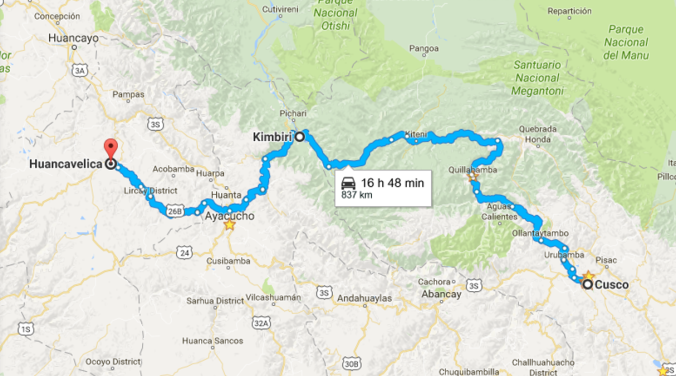
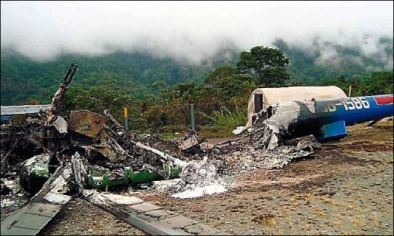








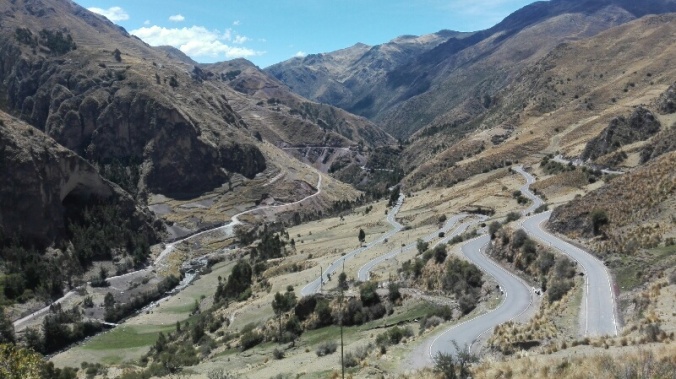
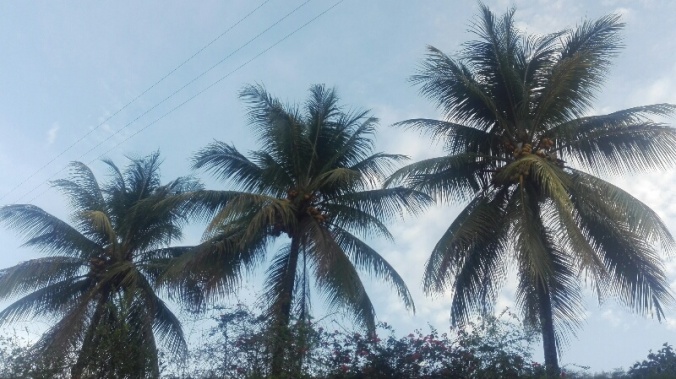
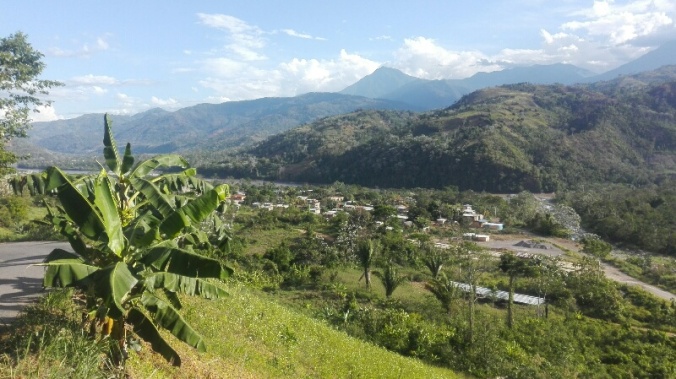
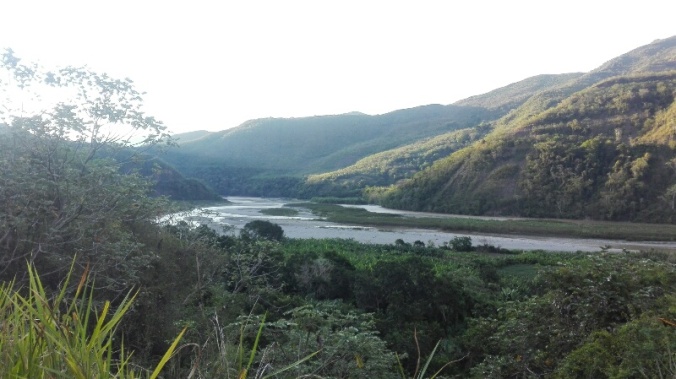
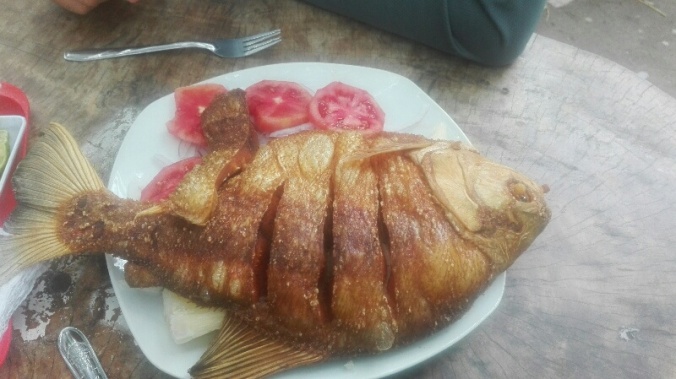







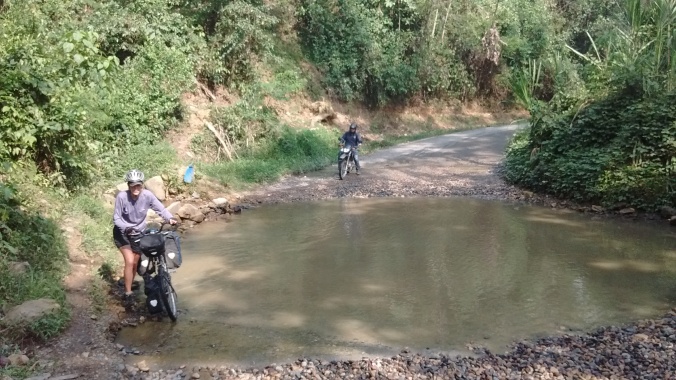
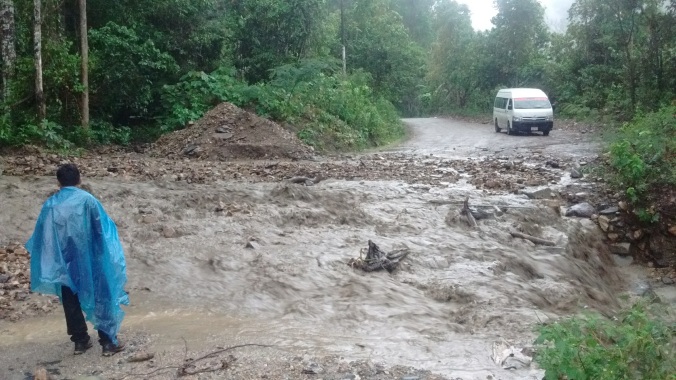





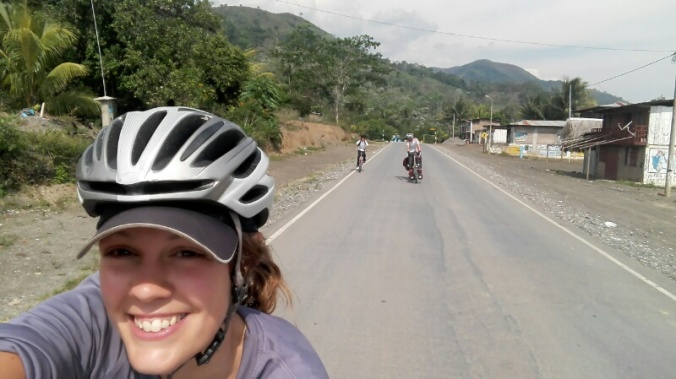
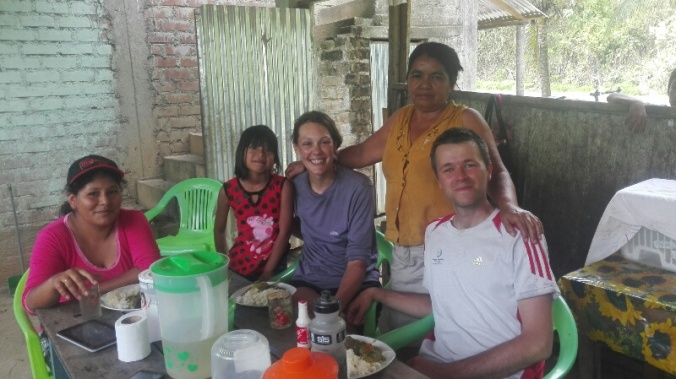
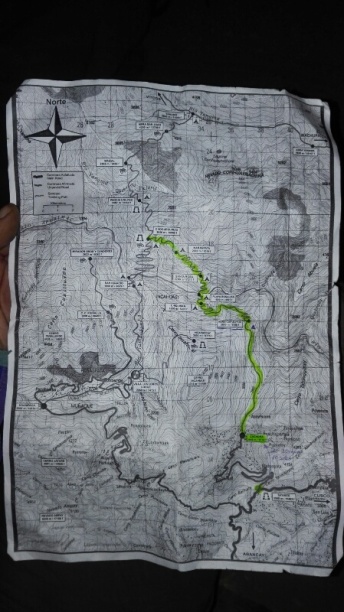
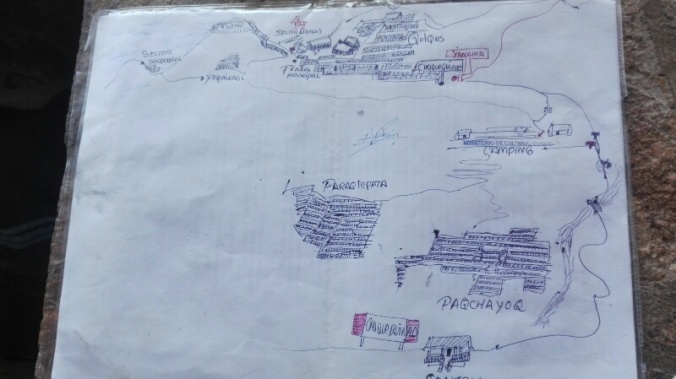 Take a picture of this map at the entrance as you won’t get another chance!
Take a picture of this map at the entrance as you won’t get another chance!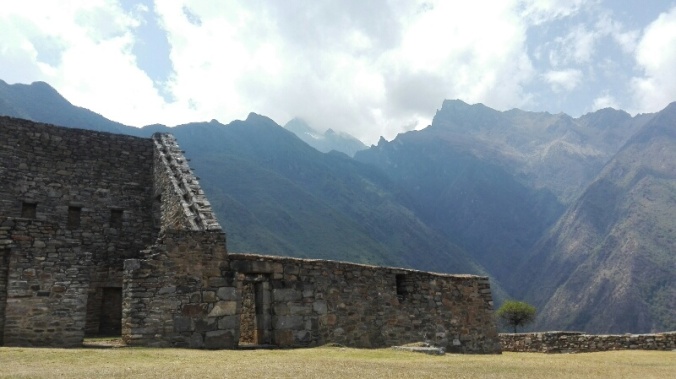




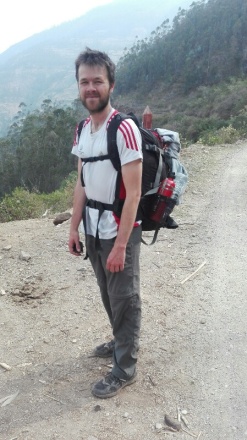 stuffed with supplies, we first had the hidden Inca city of Choquequirao in our sights, only accessible by a bus, collectivo then a two day hike in and one back from the town of Cachora. Never ones to risk being left hungry, our bags resembled a mobile food market, with 35 bread rolls swinging from them, a kilo of pasta, boiled eggs, avocados, cheese, and an impressive array of buscuits, chocolate, coffee and bananas that would keep us powered for 4 days. Nevermind the fact that I’d only packed one pair of socks to make space for all these goodies. Priorities!
stuffed with supplies, we first had the hidden Inca city of Choquequirao in our sights, only accessible by a bus, collectivo then a two day hike in and one back from the town of Cachora. Never ones to risk being left hungry, our bags resembled a mobile food market, with 35 bread rolls swinging from them, a kilo of pasta, boiled eggs, avocados, cheese, and an impressive array of buscuits, chocolate, coffee and bananas that would keep us powered for 4 days. Nevermind the fact that I’d only packed one pair of socks to make space for all these goodies. Priorities!


